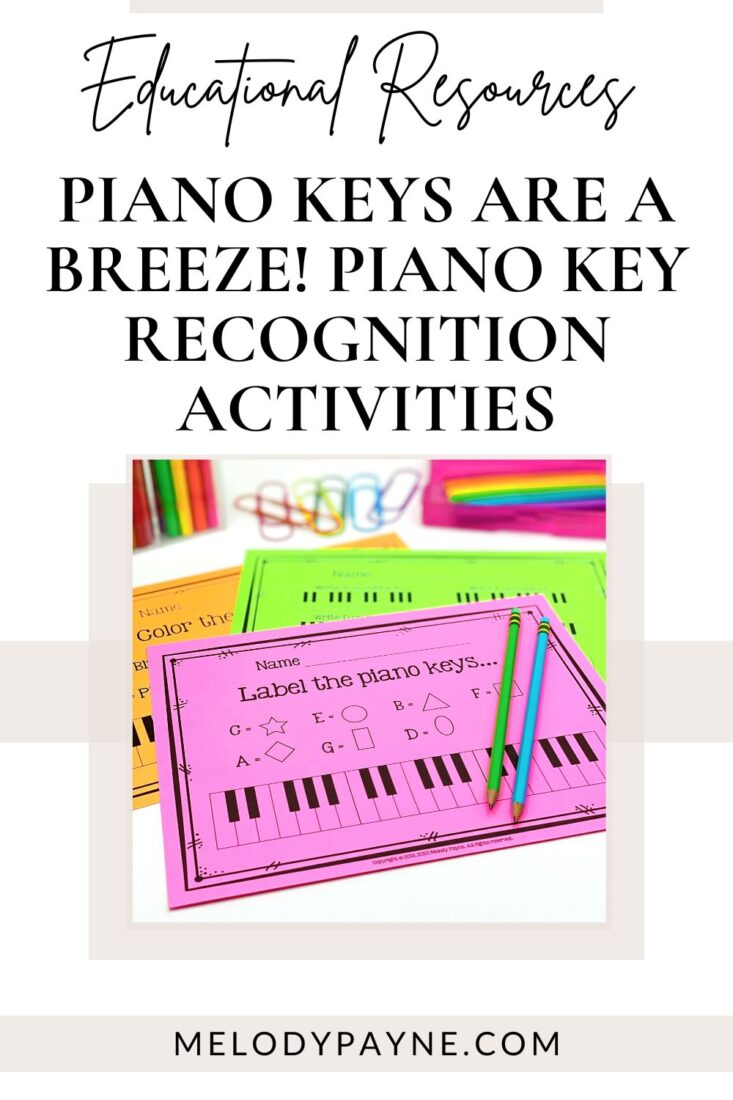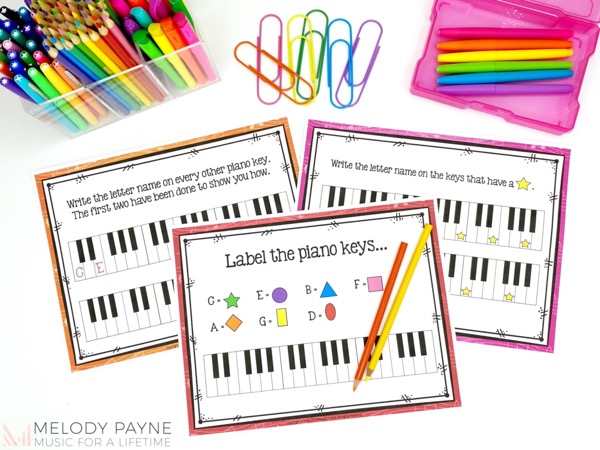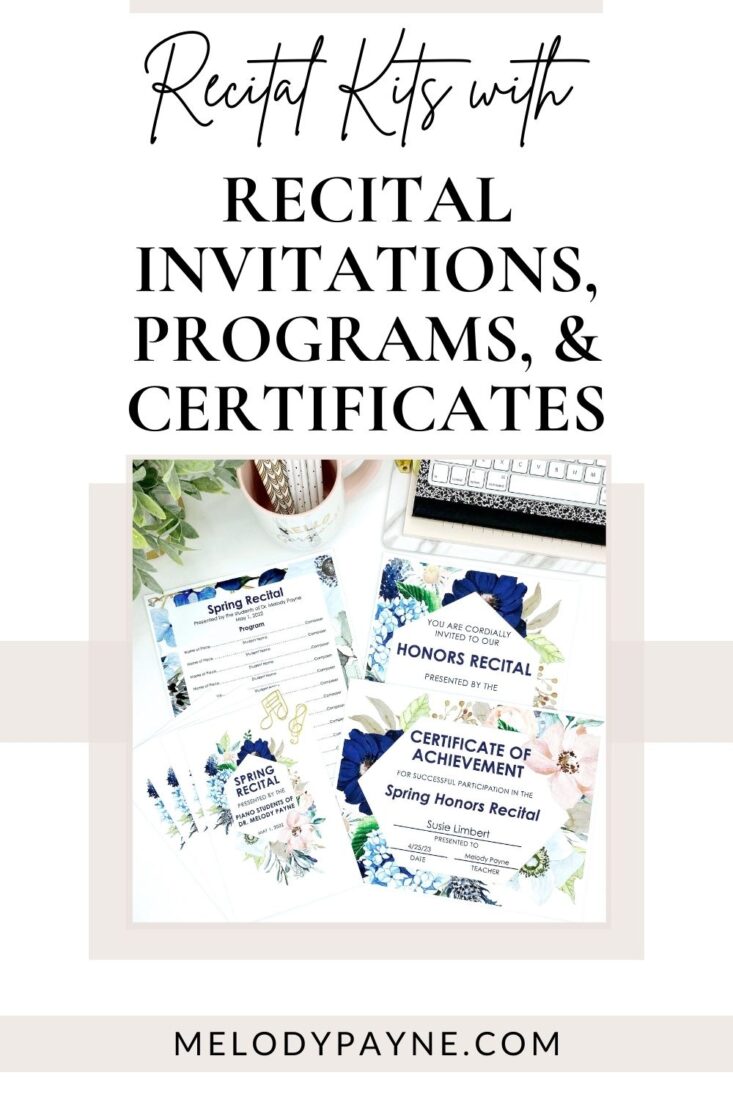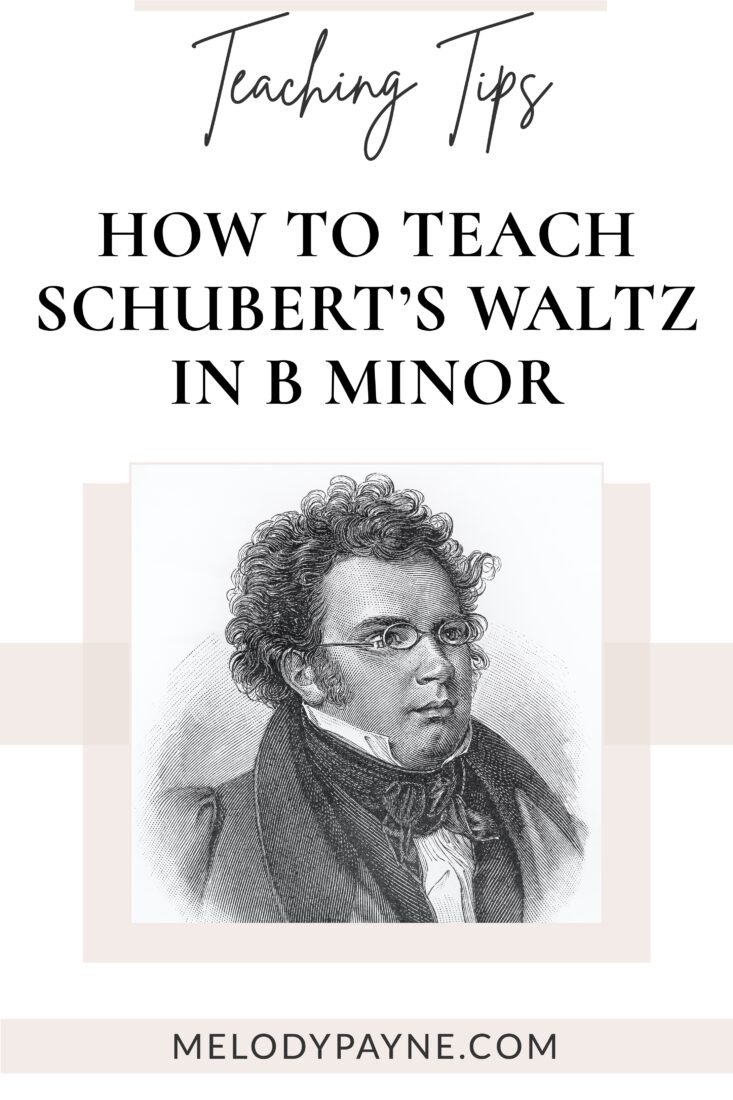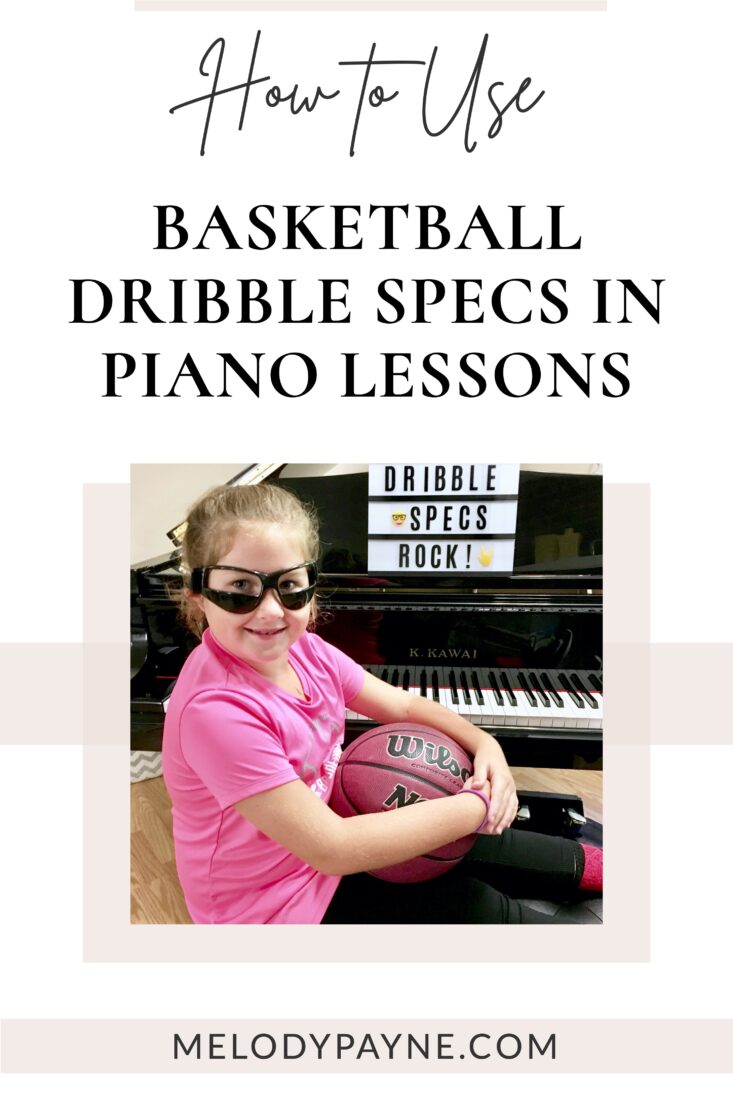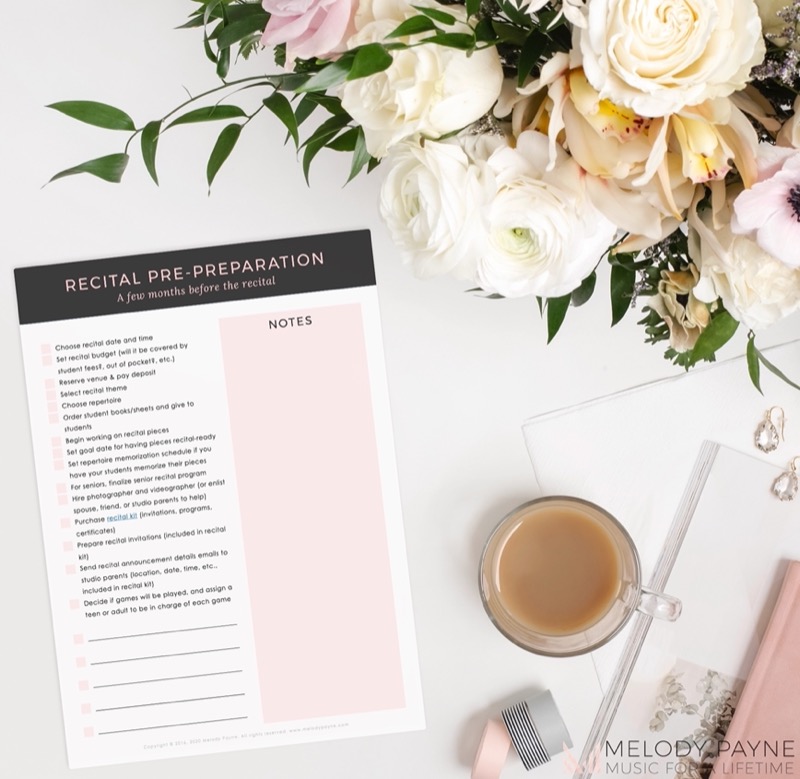Piano Keys Are a Breeze! 11 Introductory Piano Key Recognition Activities
This post may contain affiliate links. If you purchase something through an affiliate link, I will receive a small commission at no cost to you. For more information, read the disclosure statement here.
Are you are a piano teacher who regularly takes on young, brand-new beginner students? If so, you may have been frustrated by their inability to recognize white notes on the keyboard even after many weeks of lessons. You may have played all sorts of keyboard geography games during their lessons, only to find that after every subsequent lesson, some students still cannot find Middle C. Or worse yet, they are still counting up or down from C in order to find any of the other notes! What if there were an affordable, reusable resource that could help your students realize that Piano Keys Are a Breeze? Read on to learn more!
What Is Piano Keys Are a Breeze?
Piano Keys Are a Breeze is an attractive and educationally sound set of 11 slides/worksheets that will lead your students through the process of keyboard note recognition step by step. You can use the worksheets either at a face-to-face lesson, online, or as homework.
As teachers, we know that the key to learning the white notes is in reference to the black notes. However, students must be made aware of this from the start. Here’s how Piano Keys are a Breeze leads students to recognize the notes in a sequential fashion.
Piano Keys Are a Breeze Part One
- First, from an array of short keyboard diagrams, students circle the groups of two and then three black keys.
- Then, students write the names of the white notes that are found at the ends of each black note grouping (e.g. C, E, F and B), as well as the white notes that are in the middle of these groupings (e.g. D, G, and A).
- Next, the student is to write an ‘X’ on various given piano keys, again on abbreviated keyboard diagrams.
- On page 5 of Piano Keys are a Breeze, students are presented for the first time with two-octave keyboard diagrams. Here, they should label all the As, Bs, Cs, etc. Careful! There’s a trick question on this page: “Write an H on every H”. Hopefully young students will laugh when they see this. 😊
Piano Keys Are a Breeze Part Two
Have you noticed that very often in beginner theory books, keyboard diagrams start with C? No wonder then, when students are asked to name the notes on the actual piano keyboard, some are tempted to just count up from C! In this resource, however, at least half of the diagrams start with F, which is a welcome change. Let’s continue …
- Break out the crayons! On page 6 of Piano Keys are a Breeze, students get to colour each key of a three-octave keyboard drawing a different colour.
- Next comes a real challenge for young students: They are to write the letter name on every other piano key on three-octave keyboard drawings.
- Next, students label the piano keys with a green star, a pink circle, a blue triangle, etc. Children will be very familiar with these geometric shapes. They’ll probably be more than happy to show off their colouring skills in this way.
- Next comes an activity where two keyboard diagrams have random yellow stars on them, and the students are to name only the keys that have a star.
- Subsequently, there is a matching activity where students are to draw a line from the piano keys to the correct musical alphabet letter. These are floating in random order around the keyboard drawing.
- By the time students reach the last page of Piano Keys are a Breeze, they should have no trouble following the steps to drawing their own piano keyboard. Both you and your students will be very proud of their ability to not only name the notes on the piano keyboard, but also to produce their own keyboard by drawing one in the provided space. What a perfect capstone project!
So Many Uses!
Some options for teachers using this resource are:
- Print out the full-colour pages and give students this entire fun booklet to complete.
- Print out the black-and-white version to save on ink. (Use brightly-colored paper if you prefer! affiliate link)
- Distribute one or more pages per lesson during a private lesson. Students will look forward to the next lesson when they know they’ll receive their next attractive, fun worksheet!
- In a group class, distribute the whole packet and allow students to work at their own pace. The teacher then circulates to help. Students who finish early can consult the answer key to check their own work.
- Save your ink entirely by presenting this material online.
- For online lessons, get parents involved! Provide them with the answer key so that they can help their child complete the worksheets.
Wrapping Up
The cute and colourful graphics and large font sizes will be very attractive to children; completing the pages will seem easy to them. As there is only one task per page, students won’t feel overwhelmed. In fact, learning the keys one step at a time, strengthening this skill as they go, will feel empowering to them. Students will be so busy doing the variety of activities that reinforce the notes they’ll barely notice that they are learning. And of course, learning is always better when it is fun!
The possibilities for use are probably endless. I plan to use this at my next small group piano class and set up a few of the pages as a friendly competition between two teams. Who can correctly complete the matching activity the fastest? And then, who can run to the piano and correctly play the notes they matched on paper?
Piano Keys are a Breeze is a valuable resource whether you teach individual lessons or groups of children. Get your copy now and watch your beginner students’ keyboard recognition skills improve immediately!
Other articles & resources for teaching beginning piano lessons:
Don't miss out!
Follow us on Facebook and Instagram, join our Facebook group for piano teachers, and subscribe to the newsletter to get helpful teaching tips, resources, and tutorials delivered straight to your inbox every week.
Celeste-tina Hernandez
Celeste-tina Hernandez
- activities for piano lessons, beginner level theory sheets, beginner piano lesson activities, beginner piano worksheets, beginning piano, beginning piano lesson, beginning piano worksheets, introductory piano worksheets, keyboard activities for young students, keyboard geography, keyboard geography for young students, online piano lessons, piano activities for beginner students, piano geography, piano key worksheets, piano keyboard worksheets, piano keys, piano lessons, piano teaching worksheets, piano worksheets, teaching piano keys
Welcome!

Hi! I’m Melody Payne, a pianist and piano teacher, educational resource author, a fun-loving wife to the most wonderful and talented hubby I could ask for, and a lifelong learner who loves to share. I want to make your life as a music teacher easier by writing and sharing helpful and relevant music teaching articles, and by creating educational resources with your very own students in mind. If you are a parent who wants to enroll your child in piano lessons, I’d love for us to get started building those skills that can give your child a lifetime of musical enjoyment!

